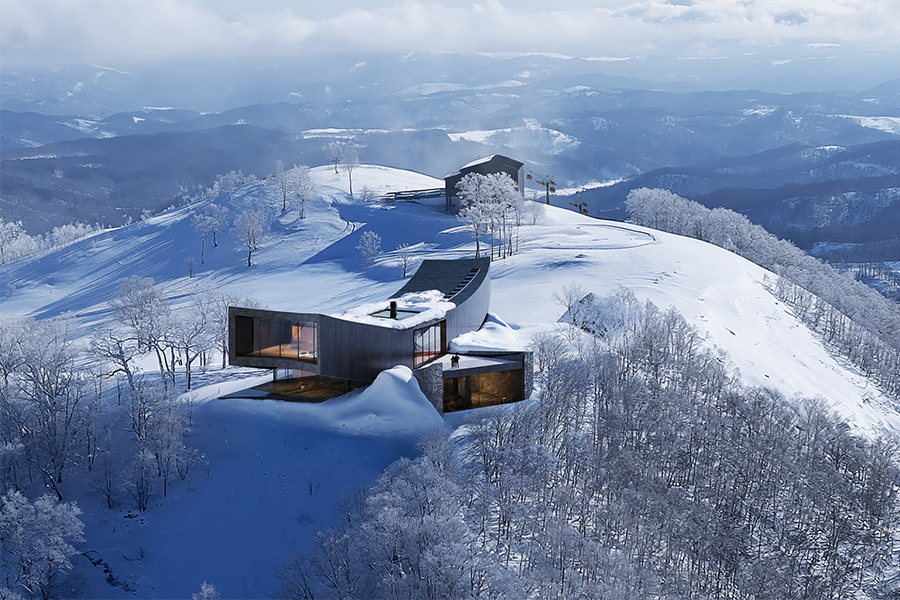At first, the notion of a sprawling, eco-minded smart city, a utopian vision powered by technology that promised to redefine community, seemed far-fetched. Yet designs for these futuristic developments, overseen by venerable architecture firms, have flourished in recent years. Some, like Kohn Pedersen Fox’s Songdo International Business District outside of Seoul have already attracted thousands of residents who live, work, and shop in pedestrian-friendly neighborhoods situated on 1,500 acres of reclaimed land.
Bjarke Ingels Group (BIG) garnered attention when it revealed its masterplan for BiodiverCity, a trifecta of artificial islands resembling lily pads built off Penang in Malaysia. That was soon followed up with news of Oslo Science City, a net-zero innovation hub in the Norwegian capital designed with A-Lab.
Other large-scale projects in the works include ShoP Architects’ masterplan for Konza Technopolis, a business and technology hub located southeast of Nairobi, Kenya; URB’s recently revealed the Parks in South Africa, a city planned to produce 100 percent of its energy, water, and food onsite through biodomes, solar-powered air-to-water generators, and bio-gas productions; OMA’s car-free development Chendgu Future Science and Technology City in China’s Sichuan province; SOM’s contemporary extension of Cairo, linked to the historic Egyptian metropolis via public transit; and Waterstudio’s Maldives Floating City, where 5,000 low-rise homes are clustered in a lagoon.
Amaravati in India, anchored by a government complex, will come courtesy of Foster + Partners, the same firm behind the masterplan of Lamda Development’s 67 million-square-foot Ellinikon on Greece’s Athens Riviera, transforming the site into a series of self-sustaining, walkable mixed-use neighborhoods.

BIG’s masterplan of BiodiverCity in Penang, Malaysia includes three miles of public beaches, 600 acres of parks, and a 15-mile waterfront
The Middle East is a hotbed of development in the segment. Ecology is at the heart of the Red Sea Project, part of the Saudi Vision 2030 program. Managed by Red Sea Global, it revolves around hospitality and recreation, with 50 hotels slated for completion by 2030 on a swath of the country’s west coast.
That same sensibility will take a residential approach at the Line, a renewable energy-fueled megacity for some nine million people north of the Red Sea. It is part of the vast NEOM development, which comprises more than 10,000 square miles of sustainable tourism initiatives, including hotels. Its first announced partner is Ennismore, which will bring a science fiction-inspired 25Hours and a Morgans flaunting a ski slope-shaped roof to Trojena, NEOM’s alfresco ski resort. Nearby, Kuwait will also be home to the biodiversity rich XZero City.
Not all cities of the future are land based. Italian firm Lazzarini Design Studio is working on Pangeos, a terayacht that will qualify as the world’s biggest boat but also a floating city with parks, shopping, and residences for up to 60,000 people when it opens in the next eight years at a cost of approximately $8 billion.

The turtle-shaped Pangeos terayacht will be the largest floating structure ever built
Even North America is warming to the idea of smart cities. In Innisfil, north of Toronto, Partisans studio is seamlessly merging rural and urban living with the cutting-edge Orbit, which combines fiber optics, autonomous vehicles, and drone ports across 450 acres. Although software company Blockchains backed out of creating an innovation park on 67,000 acres of Nevada desert, it indicated a sense of unbridled ambition that is now synonymous with these ventures. “Smart city is no longer expansive enough a term to classify the kinds of giga projects happening throughout the world,” says Tom Wiscombe, the Los Angeles architect whose eponymous practice was going to work on it with EYRC Architects. “These are vibrant, dense, lively new environments for humans.”
This article originally appeared in HD’s December 2022 issue.








